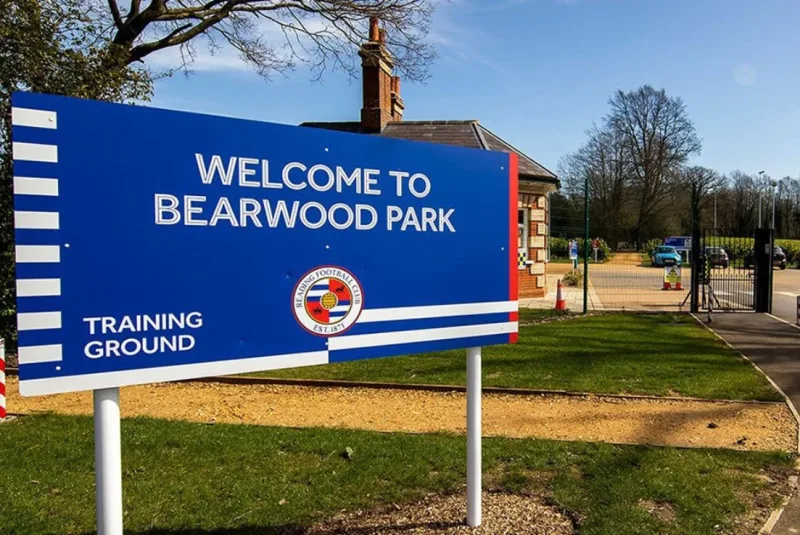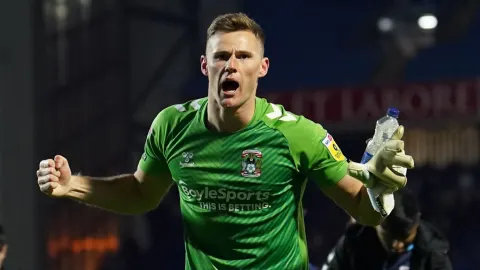Rob Shay discusses how a Category 1 academy develops cohesive pathways for its youth goalkeepers.
When any player enters a club’s academy system, the aim will always be to one day reach first-team football. Considering the odds – especially for goalkeepers - it’s vital that clubs make the pathway from the youth ranks to professional football as effective as possible for player and club. That’s exactly what Reading’s Head of Academy Goalkeeping Rob Shay is doing.
The first step is identifying players with the potential to reach those levels. It starts away from the ball. Shay tells Goalkeeper.com: “We're looking for personality. A love of the position is a massive one. A real love of learning the position and studying their craft is massively important. We look at their athletic potential, how they solve problems within a game, and look at the mentality that they have.”
Shay and his team will then look to “layer their learning” with game-realistic and multi-functional training sessions. “We're trying to make the sessions look like the game and pose the problems that they're going to find within the game,” he says. “We're trying to be clever with our practice design, so that the session brings out the characteristics we want within the goalkeepers and creates the decisions we want them to make.”
It is also vital that there is a cohesive pathway through the age groups. As Shay says, it’s about “fostering an environment where you create the characteristics your club wants, it's all aligned towards your philosophy, your game model”. In fact, all of Reading’s current U21 goalkeepers, as well as first team second-choice goalkeeper Coniah Boyce-Clark, have all been with the club since the Under 9 age group.
The concept of having an aligned vision is brought up on multiple occasions by Shay, who also feels that it is important regardless of any possible staff turnover within the coaching team. “Each club has a different staff model but there will be someone, you hope, who is charged with maintaining the philosophy within the club,” he says. “As part of that, hopefully their job is to take care of the CPD [Continuing Professional Development] and up-skilling their staff so that the messages from each member of staff aren't conflicting.”
Senior goalkeepers and those in different age groups can also play a key role in development, with Shay stating that Reading’s young goalkeepers “will train across multiple age groups”. He says: “Our 21s will train with our first-team at times. Our 21s and 18s train together on a daily basis and our 15s and 16s often join that group - we're very fortunate, they're on a full-time school programme. You'll find our 9s, 10s, 11s goalkeepers will train together. Our 12s, 13s, 14s goalkeepers will train together.”
It is also important that there is a changing of interpersonal dynamics in any given week for goalkeepers. “You make sure that at times they're the oldest and at times they're the youngest within the group,” Shay continues.
“I think you'll see some real good personality traits grow from this. But also once kids start to become real leaders, they'll help grow the other goalkeepers around them, and they'll give little bits of advice and pick on the experiences of the kids around them. That peer to peer learning, I think, is a real key element of goalkeeper development.”
Throughout all of that, the young goalkeepers will have a learning plan that is worked through during the season and reviewed. Speaking of the reviewing process, Shay says: “There's lots of analysis that goes on as part of that, so clips of their strengths, of their weaknesses, and discussions that go on around that.”
They also use statistics, although Shay stresses that stats “need real context” for goalkeepers in younger age groups.
There are still Key Performance Indicators (KPIs) for the youngsters. “You're not going to expect an U9 to hit a sidewinder like Ederson,” Shay says. “There'll be a KPI associated with what an U9 should do on his journey towards that particular skill. I think it's understanding what each element of each characteristic you're looking to develop within the goalkeeper looks like at each age, measuring the goalkeeper against that, helping them on their journey with their individual development plan and ensuring you're progressing alongside that each year.”
Rising through each age group can be a test for any goalkeeper, but taking the step up to the senior level can be the most difficult of all. That is where loans can come in, but it’s important for the club to give players the right move.
“You have to do a lot of research and have a lot of knowledge,” Shay says. “Within the club, it's down to the goalkeeping department to have a real understanding of what each level brings, and what each level requires from the goalkeepers. You need to be pitching your goalkeepers at the right level because straight away you need trust. You need to build relationships with the managers and the clubs at those levels.”
He adds: “You try and marry it up with a fit for a goalkeeper who is going to be challenged by a level but is going to perform well enough that he helps the club, he goes to achieve what they're trying to achieve that season.”
Another pathway beyond club football is linking up with the national team. Shay describes Reading’s academy staff as having developed “close relationships with the international coaches.”
“We try to share ideas and coach together as often as possible which also means the staff at the fa have a good understanding of the goalkeepers within our program which makes for a smooth transfer into international camps for those selected” he explains.
It’s also important to ensure that the prospect of one day being involved in the first-team squad feels reachable for the goalkeepers. “Once they get within touching distance of that last stage, being able to train and understand what characteristics the first-team goalkeepers have that maybe they need to add to their game to make the last steps is important,” Shay says.
“If you create a really open learning environment, these goalkeepers are going to have a good understanding of where they're at and the key developments they need to make, and they'll feel it within their games.
“The analysis now is so thorough that goalkeepers know where their strengths lie and where their weaknesses are, so you can really highlight to them the improvements they need to make in order to help them take that last step. We've got to try and help them understand the requirements needed at each jump up that ladder.”
Coniah Boyce-Clarke is an example of how that pathway can work. He joined Reading’s academy at eight years old, then worked his way up the ranks before heading out on loans to Non-League sides St Albans City and Welling United before returning to the club and pushing for a place in the first-team squad.
Now 21 years old, he has a cap for Jamaica and has played five times for Reading, getting his first competitive minutes of the 2024/25 season in the club’s Carabao Cup match against Colchester United.
“He is a really strong athlete, an exceptionally powerful goalkeeper who was a real good learner in terms of being passionate about developing all the different goalkeeping actions as a young man and was able to put them into the game,” Shay says of the academy graduate.
“He had a really big personality as a young man and a real desire to win. His ability to use his athleticism and his ability to learn skills really helped him develop an all-round game and ability to defend the goal, defend the area, defend the space.
“He was really comfortable in possession. He used that personality when he was in possession. He really likes having the ball at his feet and trying to hurt the opposition when he's got the ball at his feet.”
Having honed those skills while progressing through Reading’s pathway, the hope is that Boyce Clarke and those who came before him can act as an inspiration for more young goalkeepers to do the same.








